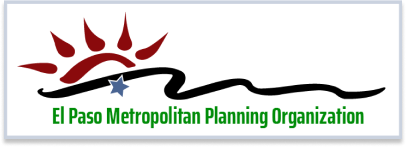Binational Cooperation
Institutional Cooperation/Coordination
Border Master Plans
The El Paso MPO participated in two border master plans within the past 4 years:
The Texas-Mexico Border Master Plan
The New Mexico – Chihuahua Border Master Plan
The first one sponsored by TxDOT and the second one by NMDOT. The plans were contracted to private consultants, and had socialization processes with public and private institutions from the US and Mexico
International Bridges Steering Committee (BSC)
This committee was organized in 2016 by the City of El Paso, in principle to focus on ways to reduce delays (emphasis on trucks) at the international border crossings (IBCs), but now has evolved to other issues connected with IBCs such as multimodal accessibility, ITS, safety. Studies, plans, and projects on both sides of the border are shared in this committee, which has helped improve communication between agencies and organizations on both sides of the border. The BSC meets once a month, and with the availability of virtual technology, the attendance has increased. BSC members include people from both sides of the border at the local, state and federal levels, from public and private entities:
CBP
| TxDOT | El Paso Police Dept. | Maquila Industry |
| GSA | NMDOT | Texas DPS | Transportistas |
| Aduana México | State of Chihuahua | El Paso MPO | Customs Brokers |
| US Consulate | City of El Paso | IMIP (Juárez) | Etc. |
| MX Consulate | H. Ayuntamiento de Juárez | Fideicomiso de Puentes Fronterizos (Chihuahua) |
|
Border Trade Advisory Committee
Established by law in the State of Texas. Its chair is the Secretary of State
Trans-Border Travel Research Cooperation/Coordination
International Travel Demand Modeling (iTDM)
The El Paso MPO has been modeling border traffic for several years. Its first international travel demand model (iTDM) was developed 18 years ago.
The challenge for the development of an iTDM is getting disaggregate border crossing data. CBP reports flows aggregated by moth for each of the IBCs in the MPO area, but an iTDM requires at least data by day, ideally by hour.
For the newer version of the iTDM with macro-micro level feedback loops, currently under development, CBP has granted permission to the El Paso MPO and its consultants to go on-site (within CBP premises) and gather detail information by hour, such as primary inspection time, per lane/booth-type (SENTRI, Ready, General Purpose, etc.). The iTDM requires such level of detail to properly plan for the future, responding to uncertainties such as:
- Need for additional capacity on existing IBCs
- Impact of new technologies at IBCs
- Need for new IBCs
Therefore CBP’s understanding and cooperation has been excellent and much needed for the iTDM effort.
In needs to be emphasized that the official TDM for the El Paso MPO includes only the US side of the border, treating IBCs as external zones/stations. The iTDM, which includes the Mexican side as well, will nevertheless help estimate flows at IBCs more accurately from a better characterization of trans-border OD patterns, networks, and IBC conditions.
Agencies Involved
Partnerships with Mexican public agencies include IMIP (Instituto Municipal de Investigación y Planeación) and COLEF (Colegio de la Frontera Norte), both highly professional and well recognized locally and nationally in Mexico. These two research agencies have much valuable information and experience on the Mexican side. No formal contracts with the El Paso MPO, only the understanding of the mutual benefit in sharing information and coordinating.
On the US side, as previously mentioned, CBP has been a very good partner, showing great interest in the iTDM work since they see the benefit of planning for the future as well.
UTEP (under contract with MPO) is doing part of the research work, including database development.
TTI (under contract with the MPO) is doing the emissions microsimulation component of IBCs, as well as RFID/delay research.
TxDOT (District and TP&P) is providing oversight assistance for both TDM and iTDM.
